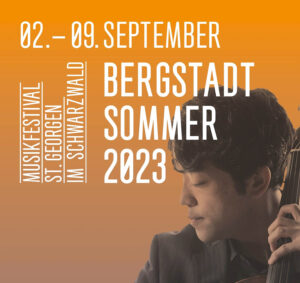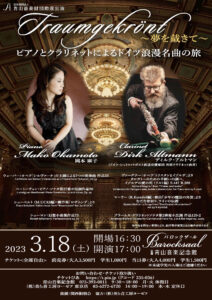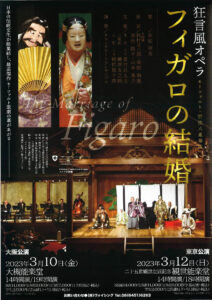Charles Koechlin
Works for clarinet
“Why is it that one is always moved when one thinks of Charles Koechlin? Because one cannot separate the rude man from the artist. His good-heartedness illuminated his music, real music whose bubbling inspiration was never strangled by science.”

Details
Charles Koechlin (1867 – 1950)
Music for Clarinet
Florian Henschel, piano
Dirk Altmann, clarinet
Rudolf König, clarinet (Duo)
Sibylle Mahni, horn
Gunter Teuffel, viola
Johanna Busch, violoncello
Label: SWRmusic
Recording: Kammermusikstudio SWR 11.03.1999 (No. 1-3, 14-16) 17./18.02.2003 (No. 4-13, 17-36)
Producing master: Andreas Priemer (No. 1-3, 14-16), Roland Rublé (No. 4-13, 17-36)
Sound engeneur: Christian Leuschner (No 4-13, 17-36) Wolfgang Rein, Arnold Lauer (1-3, 14-16)
Piano support: Werner Singer (Pianohaus Fischer) Instruments: Buffet Crampon, Paris ELITE (clarinets) und Steinway & Sons.
Where to buy

Recording highlights
Although the Frenchman Charles Koechlin is counted among the great “polystylists” of music history, a composer in dialogue with ancestors, teachers and companions, he has nevertheless shaped his own unmistakable tone in his work. And this tone can develop the effect of a drug over time, clarinettist Dirk Altmann confesses. Listeners to his latest CD will undoubtedly agree, for this collection of short and precious movements, pieces and miniatures strings together musical moments of happiness, moments to which one wants to shout incessantly: “Stay! You are so beautiful!”

The fascination of Charles Koechlin…
When I first encountered Koechlin’s music, I could never have imagined it would be my companion for so many years. A work by Koechlin would fit very nicely, I believe, into virtually any programme of chamber music. The Monodies op. 216 of 1948 are for me what Bach’s Partitas are for a violinist. It is rare for a composer to pose an instrumentalist such fundamental questions as regards breathing, inner tension and tone colour, demanding absolute concentration on the essential. Koechlin was a committed pacifist and entered a period of agonized composition with the outbreak of World War II, an influence that also informs this work. The composer’s totally bewildered struggle for expression makes performing this solo piece a very great challenge indeed. Similarly with the 14 Pièces op. 178: sections of the piano part seem very inaccessible, and it is almost impossible to grasp the music by merely playing it through. You have to experiment with nuances of tempo and phrasing until you find a way in. Once you have found it, though, the music is like a drug: Darius Milhaud spoke about the »music of a magician«. Koechlin is also often described as an »alchemist of sound«. Koechlin takes us through the history of music almost academically, from the old Renaissance masters to his contemporaries Schoenberg and Stravinsky. He is no stranger to any style of composition; there are polytonal works as well as experiments with atonality. His main youthful influences were clearly Gounod and Chopin, followed by Chabrier and his teacher, Fauré. Koechlin’s compositions make no secret of his deep affinity with Bach. An extraordinary master of his resources, he became one of the most highly respected teachers of his generation. Poulenc, Sauguet and Milhaud were not only his pupils but also his colleagues, and they remained lifelong friends. At the time of his death on 31 December 1950, Koechlin’s techniques of orchestration were still a mystery to many people; he has begun to be recognized as an important link between Debussy and Messiaen only very recently. Although Koechlin first attempted composition at the age of fifteen, it was not until comparatively late – aged forty – that his technique of Fortspinnung, or the »spinning out« of musical motifs, became fully developed. The Sonatas for Clarinet and Piano op. 85 and op. 86, to whose classical sonata form Koechlin adds new elements in masterly fashion, date from this creative phase. The songlike opening gives little indication of the paths that are to lead us through a lush jungle of undergrowth, via arabesque-like middle movements to the brilliant finales. The work was composed for Louis Cahuzac, an outstanding clarinettist of his day, who gave the premiere of the Sonata no. 2 in 1926. (Cahuzac also played in the first performance of Schoenberg’s Suite op. 29 conducted by the composer in December 1927). Sadly it was not until after Koechlin’s death that his Sonata no. 1 was premiered by Jean Tastenoe, in Belgium in February 1969. Koechlin always hinted at an orchestration of the piano part, and he orchestrated both clarinet sonatas in 1946. It is wonderful that the clarinetist’s repertoire can include other works of this era alongside the Rhapsodie by Claude Debussy. All the biographical notes about Koechlin refer to his passion for the emerging medium of sound film and his obsession with Lilian Harvey. However, his endeavors to spare film music from superficiality were not rewarded with success. One such attempt was Koechlin’s score for the unrealized film »Les Confidences d’un joueur de Clarinette« based on an Erckmann-Chatrian novel (»Confessions of a clarinet player«). Kasper (clarinet) travels round the countryside with his friend, Waldhorn, playing at village fairs. He is in love with his cousin Magrédel (Romance). After rehearsing with his partner during the morning (Aubade), Kasper hastily picks a bunch of meadow flowers and hurries to his beloved (Le bouquet de fleurs des champs). But Magrédel harbours thoughts for another man, a returned soldier by the name of Yeri-Hans. Neither Magrédel’s father, Uncle Stavolo, nor Waldhorn, Kasper’s friend, are able to dissuade Kasper from his foolishness. The two musicians swear eternal friendship and let things take their course (Pastorale). Dinner at Uncle Stavolo’s brings matters to a head (Musique pendant le dîner). Magrédel’s eyes gleam with rapture when she hears Yeri-Hans’s name, leaving Kasper and Waldhorn perplexed. With Uncle Stavolo’s reputation as the region’s strongest man at stake, they set off together for a fight (Marche familière). After plenty of schnapps and sauerkraut at the Eckerswir fair, the moment comes for Stavolo to face Yeri-Hans (Valse rustique). But as soon as Yeri-Hans sees Magrédel, he realises what his true aim is. He lets Uncle Stavolo win and invites Magrédel to dance: »We’re here to dance; so let them dance!« Kasper takes up his instrument (Rage de Kasper), leaves his village the next morning (Lamento) and spends a winter alone in the Vosges mountains. At the end we see the two friends, Kasper and Waldhorn, reunited. Spring returns and they make music together to the end of their days (Duo final). Having completed his most important works for orchestra by the end of the 1930s – Le Buisson ardent (1938) and Les Bandar-Log (1939), based on Kipling’s »The Jungle Book« – Koechlin subsequently devoted himself primarily to chamber music. During the first two months of 1942, he composed the Quatorze Pièces pour clarinette et piano op. 178, miniature masterpieces in which we are Koechlin’s companions on his lengthy trips – not to smart luxury hotels or on cruise ships, but with a tent, a rucksack and invariably a heavy »Verascope«, a camera with which he took fabulous pictures. Spain, North Africa, Turkey and most especially Greece feature on the itinerary. Koechlin’s impressions are portrayed in sound: inspiring Greek mountain villages (no. 3), moments on the island of Capri (no. 4), a bustling market in Morocco (no. 11) and a charming lullaby (no. 12), to mention just a few images that come to mind. This brings us to the short Idylle pour deux clarinettes op. 155 bis, written in 1936.
Aoyama music award
2024/ March 02.
15:30
Barocksaal Kyoto, Japan
My pianist Prof. Mako Okamoto and I received the Aoyama Music Award for our concert with the programme "Traumgekrönt" on 18 March 2023. The award ceremony will also take place on 2 March 2024 in the Kyoto Baroque Hall.
Many thanks to Laura-Erika Nakamura from Josef Woodwind Manufacture, who took great care of the concert organisation.
The Aoyama Music Award is a prestigious Japanese music prize that is awarded once a year. The winners are honoured for their achievements and their potential for the further development of music.
The prize is endowed with JPY 2,000,000.
September/29 Concert Chișinău
Weber clarinet concerto no. 1
Mountain City Summer 2023
Festival Bergstadtsommer
2023/ September 02. - 09.
Sankt Georgen im Schwarzwald
This year, my long-time chamber music partner Gen Yokosaka (cello) is expected at the Bergstadt Summer. In addition to works by Elgar and Dvorak at the orchestra concert, we will play some of my arrangements of Johann Strauss, Leos Weiner and Kurt Weil at the opening concert. We have invited Susanne Zagar-Swiridoff as a current composer.
Traumgekrönt in Kyoto
Recital with Mako Okamoto, Piano
Donaueschinger Musiktage 2023
Figaro with Kyogen Theater
10.03. Osaka12.03. Tokyo
With my Swiss wind colleagues, the KlangArt Ensemble, we are part of a performance of “La nozze de figaro”, which includes four different Japanese and German art forms.




